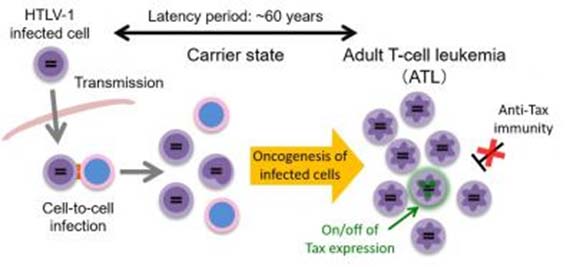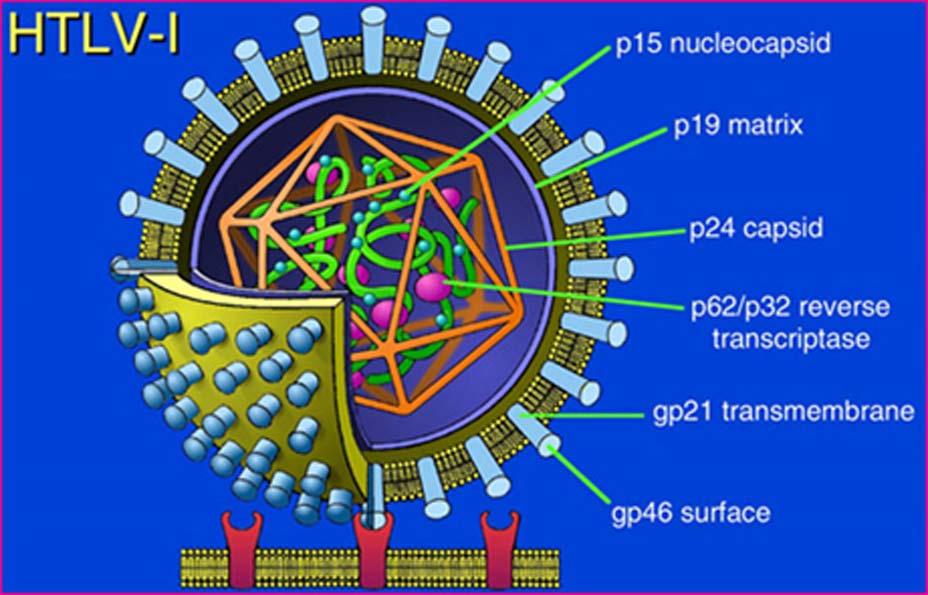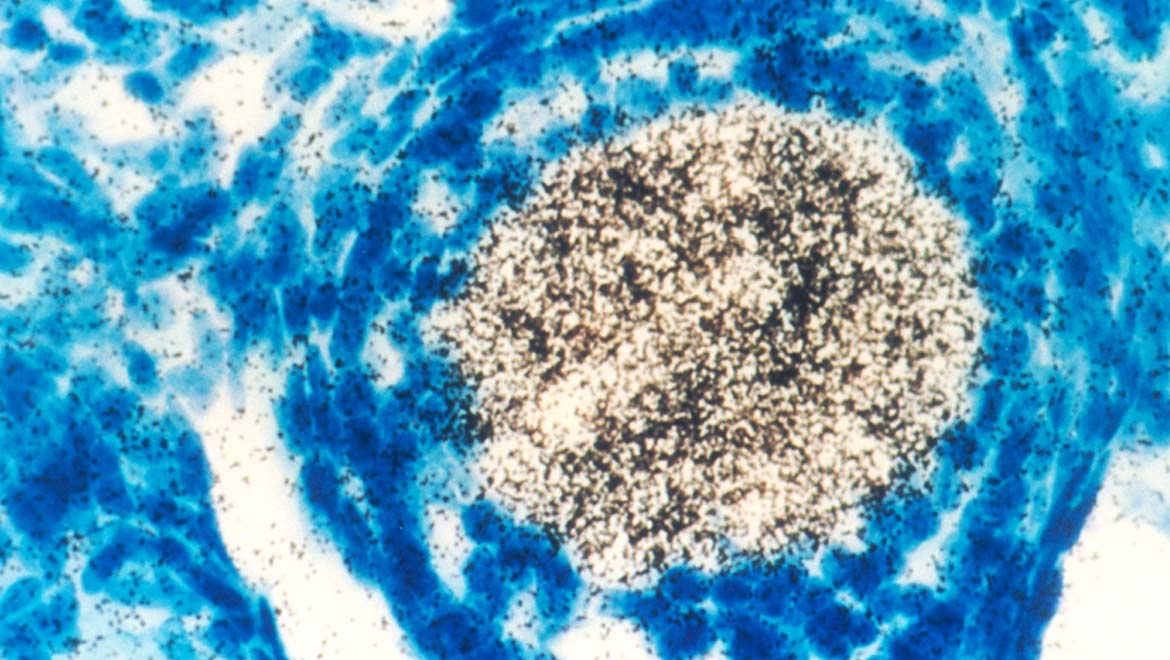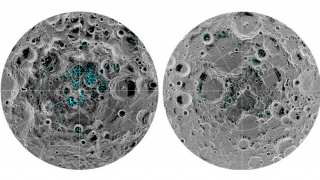Many people may be aware that the human papillomavirus (HPV) can cause cervical cancer by promoting oncogenes. Oncogenes are DNA sequences that can increase the risk of a cell becoming a tumor progenitor.
HPV is not the only pathogen that can boost the risk of cancer in human cells. There are other viruses or retroviruses that can trigger different oncogenes in different cells. A prominent example is HTLV-1, which infects human T-cells.
HTLV-1 exploits immune cells for different purposes. They include motives such as the virus’ own proliferation and to disrupt host defense responses.
They can also promote oncogenes found in T-cells, which may lead to a form of leukemia. However, HTLV-1 can persist and function in an oncogenic manner, in extremely low numbers. This makes the ability to detect it and connect it to leukemia very difficult.
Though, this new study of HTLV-1 offers greater insights into how the virus can achieve potentially dangerous feats.
Mechanism of Action of HTLV-1
The investigation was completed by researchers from Kumamoto University School of Medicine, Kanazawa University, the University of Tokyo, the Japan Science and Technology Agency, Kyushu University and the Institute for Frontier Life and Medical Sciences at Kyoto University in Japan.
Through this study, HTLV-1 infection of CD4+ T-cells and how cells are pushed towards malignancy, in cases of leukemia, was studied.
The scientists found - while HTLV-1 does activate the potent oncogene, Tax, it does so in a relatively small proportion of infected CD4+ cells. The team also reported that the virus seemed to exert a fine level of control over Tax, displaying the ability to 'switch' its expression 'on' or 'off' in a rather spontaneous manner.
The research team was able to observe live populations of infected CD4+ cells using imaging enhanced by Tax-responsive fluorescent tagging.
Results showed that the oncogene was continuously expressed in a maximum of about 18% of the total population. Another 6% expressed the cancer gene in a fluctuating pattern, while the remainder experienced a one-off bout of Tax expression. For the cells with transient expression, Tax was active for periods with an average duration of 19 hours.
Studying the Tax Gene
The team of scientists also found that inducing a knock-out of the Tax gene in experimental cells resulted in increasing levels of apoptosis not confined to the Tax-expressing cells.
In a sample consisting of 'normal' and Tax-silenced cells, 90% of the silenced cells were dead in 21 days. This incident indicated some paradoxical results:
First, Tax expression in a minority of infected CD4+ cells was necessary for the survival of all these cells.
Second, cells without Tax cannot be 'rescued' even if other cells in the vicinity still have the gene.

How HTLV-1 may infect a host and induce a case of ATL. (Source: Kyoto University/Jun-ichirou Yasunaga)
The researchers also observed that Tax knockdown in as few as 0.5% of a total live-cell population could result in "progressive" apoptosis.
They also observed that the expression of many other genes appeared to be influenced by the presence or expression of Tax. For example, cells that did not express Tax expressed another oncogene, HBZ (and vice versa).
Tax expression was additionally associated with the promotion of a panel of anti-apoptotic genes, as well as the 'master' cell-signaling molecule, NFkappaB. Some anti-apoptotic genes, including TRAF1, TNFAIP3, GADD45B, and CFLAR, showed a differential pattern of expression in Tax - negative cells. Some of these cells exhibited next to no expression of these genes, whereas others did to an inferior degree in comparison to Tax - positive cells.
It was clarified that the introduction of cellular stressors, hydrogen peroxide, and cisplatin, to the cells resulted in Tax expression. Also, cells that did express the oncogene survived significantly better under these conditions compared to cells that did not. On the other hand, Tax expression did not have a positive effect on cell proliferation.
These findings led the scientists to conclude that Tax expression (as well as its different patterns in different cell subpopulations) functioned to keep the overall infected cell count constant.
This mechanism was likely to be related to the prevention of apoptosis rather than the promotion of cell division. Prior theories that chronic Tax expression was associated with cellular aging and DNA damage offered further weight to this concept.
In addition, Tax is also associated with the expression of viral genes, including the one that codes for HTLV-1's external protein shell. These proteins may trigger immune response attacks by other types of T-cells.

Protein structure of HTLV-1 (Source: Public Domain)
Therefore, it is possible that Tax could be expressed in the minority of cells to reduce the probability of these attacks. This effect may also help cells that have become cancerous due to Tax activation (i.e., leukemia cells) to 'escape' host detection and, thus, attacks.
The magnitude of Tax expression in cells used in this study was found to be similar to those found in samples from people with adult T-cell leukemia (ATL). Tax is expressed in 50% of all cases in this form of cancer.
Highlights of the Research
Tax is an oncogene activated by the retrovirus, HTLV-1, in CD4+ lymphocytes.
A recent paper published in the journal PNAS reports that the oncogene experiences a sporadic pattern of expression in a small percentage of a given population of cells rather than being activated in all of them.
It is likely that this expression is performed to improve the infected cells' chances of remaining undetected in the host while maintaining a steady population.
The Tax gene also appears to be associated with the prevention of death in such a population, which suggests that treatment to inhibit Tax in these cells may benefit patients with ATL.
On the other hand, the results of this study also suggested that when Tax is absent, the 'alternative' oncogene, HBZ, takes over.
Overall, the work has offered an improved understanding of how HTLV-1 may influence this cancer type and how it may complicate its eradication.
Top Image: In-situ hybridization shows activated oncogenes in cancer cells. This image highlights a DNA fragment (oncogene) that was inserted into a mouse oocyte. (Source: Public Domain)
References
M. Mahgoub, et al. (2018) Sporadic on/off switching of HTLV-1 Tax expression is crucial to maintain the whole population of virus-induced leukemic cells. Proceedings of the National Academy of Sciences. 115:(6). pp.E1269-E1278.
H. Zhi, et al. (2011) NF-kappaB hyper-activation by HTLV-1 tax induces cellular senescence, but can be alleviated by the viral anti-sense protein HBZ. PLoS Pathog. 7:(4). pp.e1002025.
T. Kinjo, et al. (2010) Induction of reactive oxygen species by human T-cell leukemia virus type 1 tax correlates with DNA damage and expression of cellular senescence marker. J Virol. 84:(10). pp.5431-5437.
Terhune RK, 2018, EurekAlert, https://www.eurekalert.org/multimedia/pub/167776.php, (accessed on 12 Apr 2018)







No comment